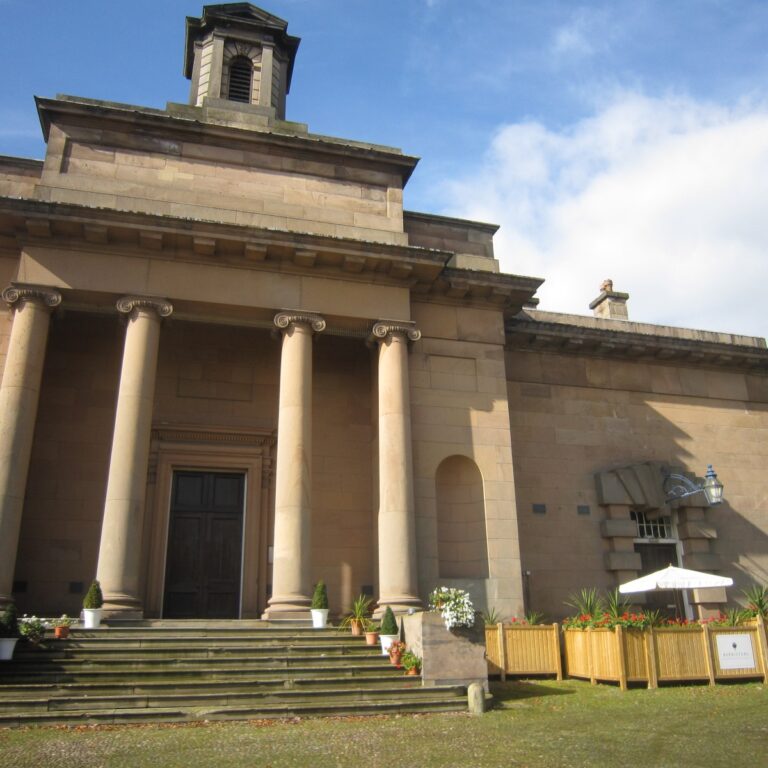Places: Knutsford
Place Type
Chapelry
County
Cheshire
Parish
Rostherne
Deanery
Frodsham
Causes
EDC 5/4/1 – Pernell Danyell contra Joan Walton
EDC 5/14/1 – Elizabeth Smyth, otherwise Rixton, contra Giles Smyth and Margaret Barington.
KNUTSFORD
In the sixteenth century Knutsford was a chapelry in the parish of Rostherne, about four miles distant. It comprised the townships of Nether Knutsford, Over Knutsford (also known as Knutsford Booths), Toft, Bexton and Ollerton. Although often referred to as a parish at that time it did not become a parish in its own right until an act of parliament in 1741 created ‘a separate and distinct parish’ from the parochial chapelry of Nether Knutsford. (14 Geo. 2 c. 5).
There were two chapels in Knutsford. A chapel is defined by Canon J. S. Purvis as ‘A building regarded as something less than or different from a parish church, or used for less than the full functions of a church.’
The parochial chapel in Nether Knutsford, dedicated to St Helena, was situated in an area known as Crosstown, about a mile from the town centre. This chapel may not have had all the rights of the parish church, although from the number of surviving gravestones it presumably had burial rights. On the creation of the parish a new church, dedicated to St John the Baptist, was built in the centre of the town and the chapel fell into decay and nothing now survives but the footprint of the building and gravestones. The act founding the parish created a vicarage and gave the right of presentation to the lords of the various manors it comprised.
A chapel of ease in the lower town developed from a chantry endowed by Sir John Legh of Booths. This chapel had a school attached. It was not uncommon for chantry priests to take up teaching as their other duties were not onerous and teaching also provide an additional source of income. Following the dissolution of the chantries in the reign of Edward VI a foundation was established to ensure the continuation of the school and chapel. A new schoolhouse was built at the time of the construction of the parish church. In 1697 the chapel warden brought a complaint to the Chester Exchequer on behalf of the inhabitants, claiming that Peter Legh of Booths had locked up the chapel, claiming that it was his domestic chapel and not available for public use without his permission. The Exchequer found in favour of the inhabitants. In the course of the judgement, it was mentioned that the same clergyman usually served both of Knutsford’s chapels.
One deponent in this case stated that in about 1617 a bear had been brought in at service time and allowed to put his paw into the pulpit, which led to the bishop prohibiting all services there for about twelve months until it was re-consecrated, plus the imposition of a fine of £5 (mentioned in Green’s Knutsford, p. 53).
The town of Knutsford was situated on one of the main roads from London to the northwest. A weekly market was held on a Saturday from medieval times. A new market hall, designed by Alfred Waterhouse, was built in 1872 by the Egerton family who had the right to the market tolls. It is now a wine bar. There were also three fairs each year to which cattle were brought from the surrounding countryside. Bear-baiting was a popular entertainment, as indicated by the incident of the bear in the chapel.
The main industry was textiles, initially the manufacture of linen thread from flax grown locally. A silk mill was built in 1770, but both the silk industry and an attempt to introduce cotton spinning failed, perhaps due to inadequate development of the transport infrastructure as industrialisation gathered pace elsewhere.
Knutsford was an important county centre for the administration of justice. From the time of the establishment of the Commission of the Peace for Cheshire in 1536, it was one of the four towns where JPs held their quarterly petty sessions. In the early nineteenth century the county jail and sessions house were built, although quarter sessions had been held in Knutsford since 1575.
The town centre still comprises two narrow streets running almost parallel. The pavements were paid for by Lady Jane Stanley (d. 1803), daughter of the earl of Derby, and were specified by her to be the width of one flagstone. This was said to be because she wished them to be narrow to discourage men and women walking arm-in-arm. She also helped to institute the widespread use of sedan chairs in the town.
Knutsford’s genteel life has been immortalised in Cranford by the Victorian novelist, Elizabeth Gaskell who is commemorated in various parts of the town, including by a building which incorporates a number of influences, including the Arts and Crafts movement. It incorporates a stone bust of her in a niche on its street front and a bronze relief. She spent much of her early life in the town and her husband was minister for a time at the Brook Street Unitarian chapel.
Sources:
Henry Green, Knutsford, its traditions and history: with reminiscences, anecdotes, and notices of the neighbourhood, (London, 1859).
George Ormerod, The History of the County Palatine and City of Chester, (second edition, revised and enlarged by T. Helsby, London, 1882), vol. i, pp. 488-493
Canon J. S. Purvis, Dictionary of Ecclesiastical Terms, (London, 1962), pp. 40-41
‘Knowstone – Kytes-Hardwick’, in A Topographical Dictionary of England, ed. Samuel Lewis (London, 1848), pp. 711-713. British History Online http://www.british-history.ac.uk/topographical-dict/england/pp711-713 [accessed 28 December 2022].
TNA: CHES 14/27, pp. 475-477, 538-541 (with thanks to The Anglo-American Legal Tradition website http://aalt.law.uh.edu/AALT.html where images of these folios are available).













